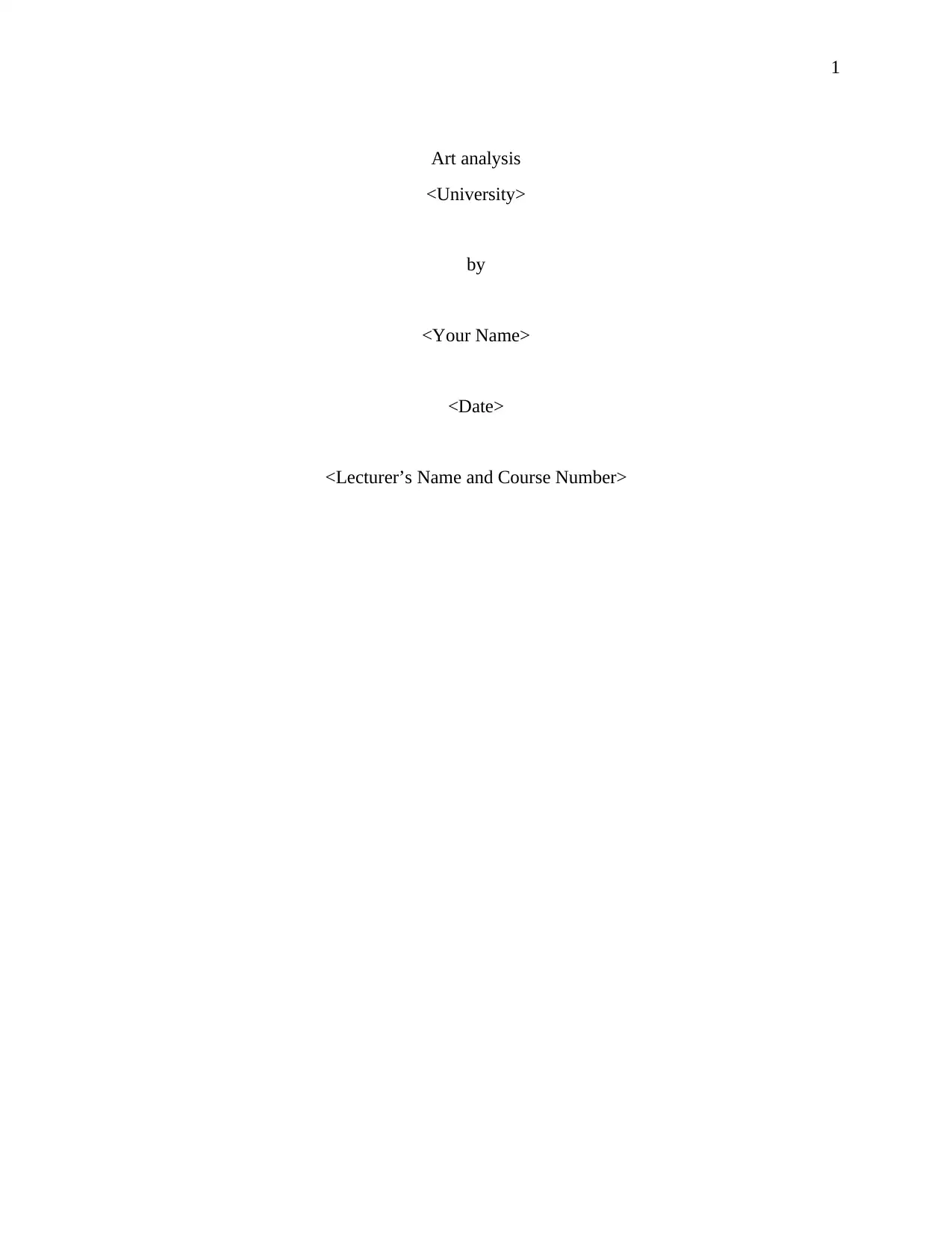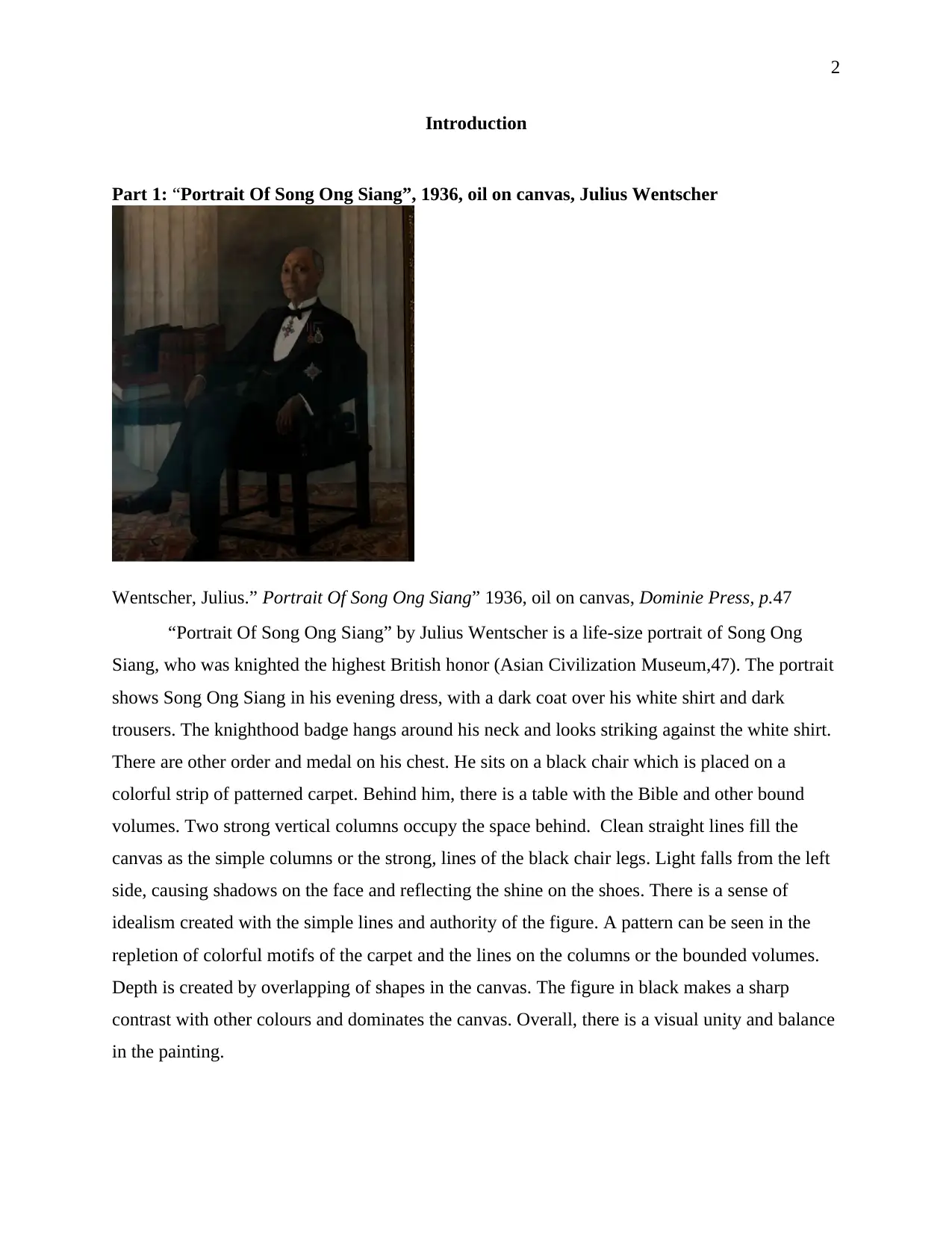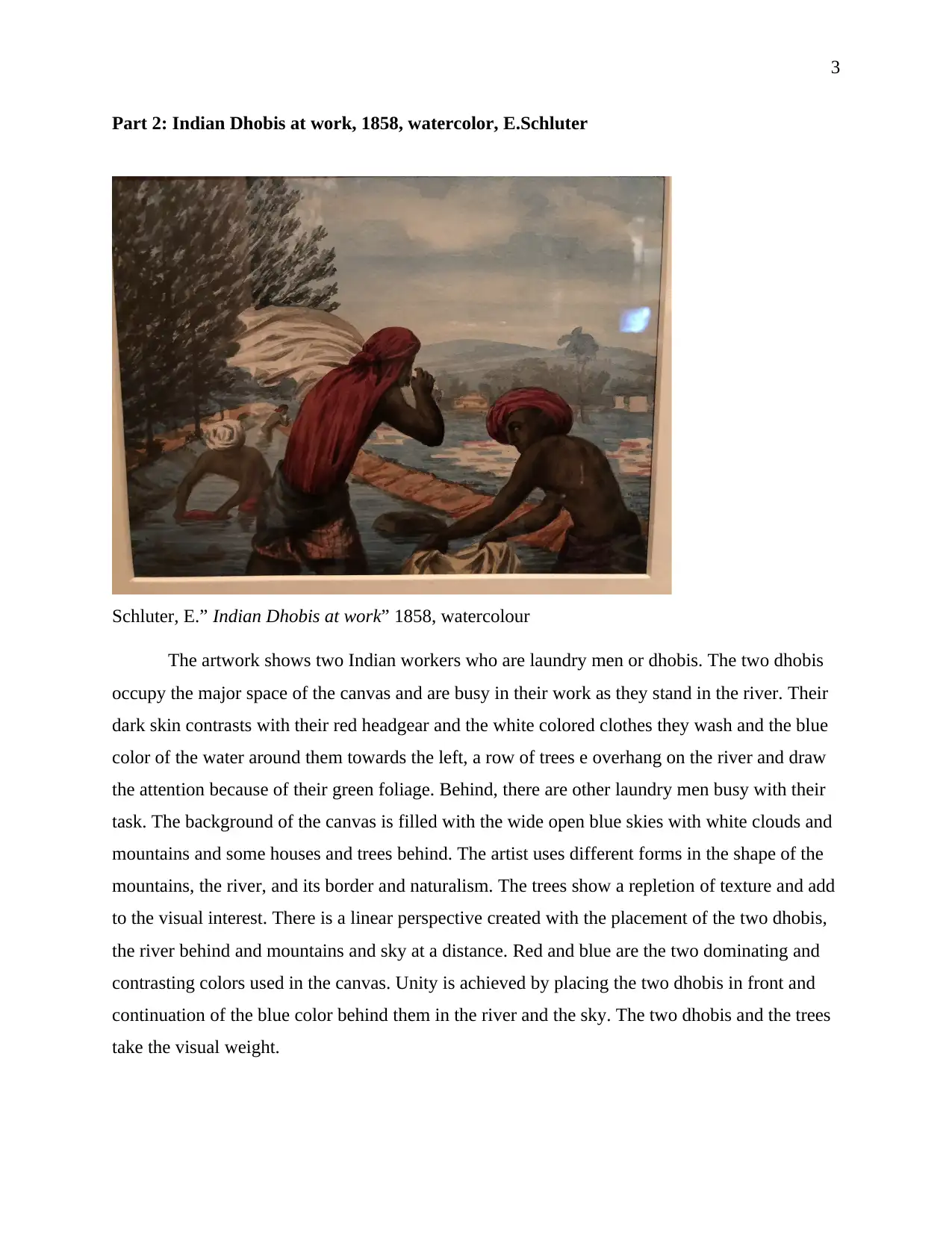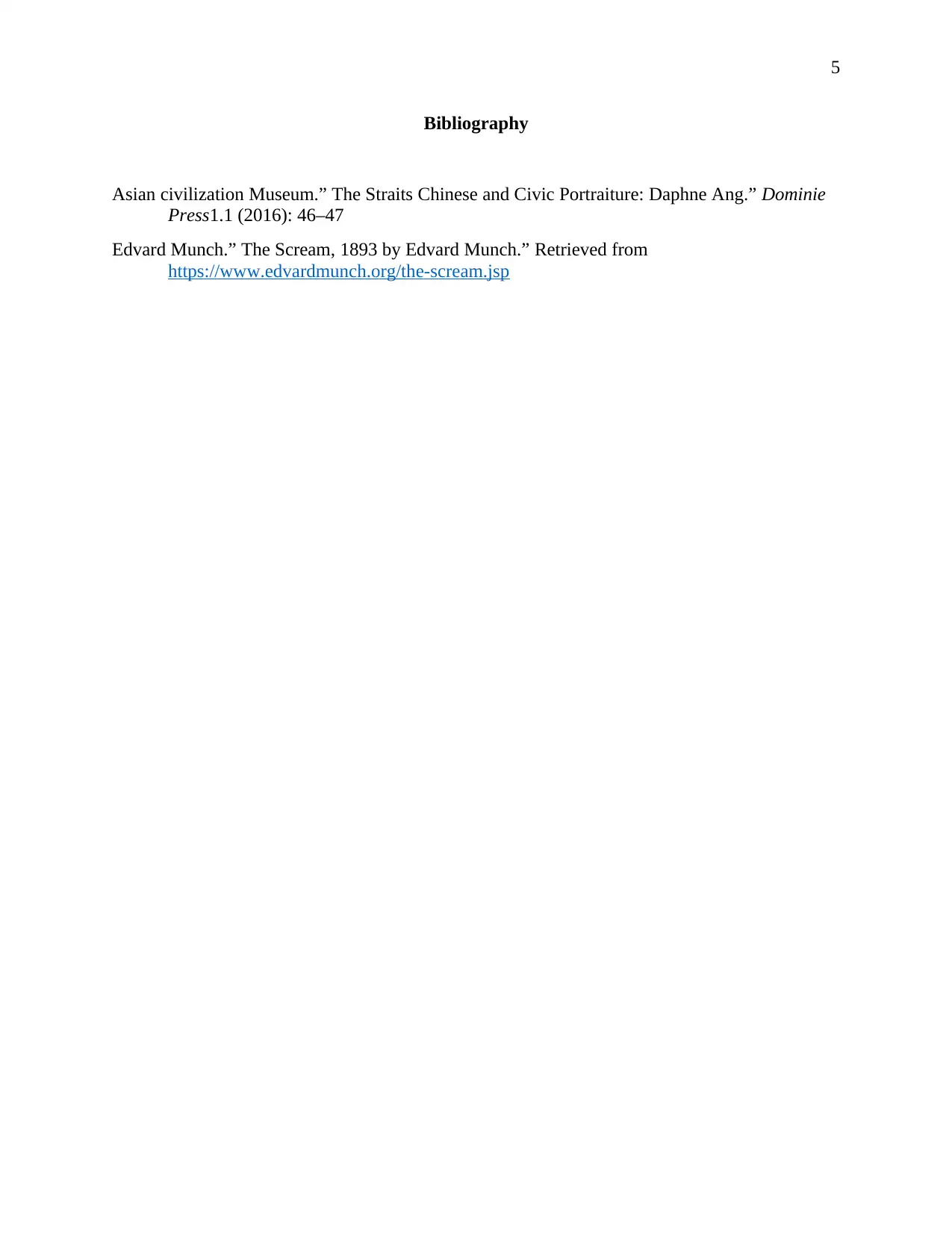LASALLE College: Art Analysis Essay on Visual Elements & Design
VerifiedAdded on 2023/05/30
|5
|882
|484
Essay
AI Summary
This essay presents an art analysis of three distinct artworks: "Portrait Of Song Ong Siang" by Julius Wentscher, "Indian Dhobis at work" by E. Schluter, and "The Scream" by Edvard Munch. The analysis identifies and describes visual elements such as line, shape, color, texture, space, and pattern within each piece. It also explores the use of naturalism, idealism, abstraction, and perspective in creating visual interest and conveying meaning. The essay further examines how artists employ these elements to achieve unity, balance, and emphasis, thereby communicating inner thoughts, emotions, and cultural contexts. The student uses proper citations and a bibliography as required by the LASALLE College assignment brief. Desklib provides students access to similar solved assignments and past papers.
1 out of 5






![[object Object]](/_next/static/media/star-bottom.7253800d.svg)